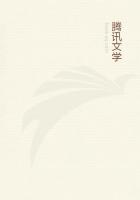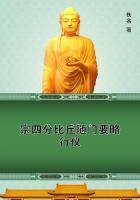Albinus speaks of teeth in the nose and orbit; Borellus, in the palate; Fabricius Hildanus, under the tongue; Schenck, from the palate; and there are many similar modern records. Heister in 1743 wrote a dissertation on extraoral teeth. The following is a recent quotation: --"In the Norsk Magazin fur Laegevidenskaben, January, 1895, it is reported that Dr. Dave, at a meeting of the Medical Society in Christiania, showed a tooth removed from the nose of a woman aged fifty-three. The patient had consulted him for ear-trouble, and the tooth was found accidentally during the routine examination.
It was easily removed, having been situated in a small depression at the junction of the floor and external wall of the nasal cavity, 22 mm. from the external nares. This patient had all her teeth; they were placed somewhat far from each other. The tooth resembled a milk canine; the end of the imperfect root was covered with a fold of mucous membrane, with stratified epithelium. The speaker suggested that part of the mucous membrane of the mouth with its tooth-germ had become impacted between the superior and premaxillary bones and thus cut off from the cavity of the mouth. Another speaker criticised this fetal dislocation and believed it to be due to an inversion--a development in the wrong direction--by which the tooth had grown upward into the nose. The same speaker also pointed out that the stratified epithelium of the mucous membrane did not prove a connection with the cavity of the mouth, as it is known that cylindric epithelium-cells after irritative processes are replaced by flat ones."Delpech saw a young man in 1829 who had an opening in the palatine vault occasioned by the extraction of a tooth. This opening communicated with the nasal fossa by a fracture of the palatine and maxillary bones; the employment of an obturator was necessary. It is not rare to see teeth, generally canine, make their eruption from the vault of the palate; and these teeth are not generally supernumerary, but examples of vice and deviation of position. Fanton-Touvet, however, gives an example of a supernumerary tooth implanted in the palatine arch. Branch a describes a little negro boy who had two large teeth in the nose;his dentition was otherwise normal, but a portion of the nose was destroyed by ulceration. Roy describes a Hindoo lad of fourteen who had a tooth in the nose, supposed to have been a tumor. It was of the canine type, and was covered with enamel to the junction with the root, which was deeply imbedded in the side and upper part of the antrum. The boy had a perfect set of permanent teeth and no deformity, swelling, or cystic formation of the jaw.
This was clearly a case of extrafollicular development and eruption of the tooth in an anomalous position, the peculiarity being that while in other similar cases the crown of the tooth shows itself at the floor of the nasal cavity from below upward, in this instance the dental follicle was transposed, the eruption being from above downward. Hall cites an instance in which the right upper canine of a girl erupted in the nose. The subject showed marked evidence of hereditary syphilis. Carver describes a child who had a tooth growing from the lower right eyelid. The number of deciduous teeth was perfect; although this tooth was canine it had a somewhat bulbulous fang.
Of anomalies of the head the first to be considered will be the anencephalous monsters who, strange to say, have been known to survive birth. Clericus cites an example of life for five days in a child without a cerebrum. Heysham records the birth of a child without a cerebrum and remarks that it was kept alive for six days. There was a child born alive in Italy in 1831 without a brain or a cerebellum--in fact, no cranial cavity--and yet it lived eleven hours. A somewhat similar case is recorded in the last century. In the Philosophical Transactions there is mentioned a child virtually born without a head who lived four days; and Le Duc records a case of a child born without brain, cerebellum, or medulla oblongata, and who lived half an hour.
Brunet describes an anencephalous boy born at term who survived his birth. Saviard delivered an anencephalous child at term which died in thirty-six hours. Lawrence mentions a child with brain and cranium deficient that lived five days. Putnam speaks of a female nosencephalous monster that lived twenty-nine hours.
Angell and Elsner in March, 1895, reported a case of anencephaly, or rather pseudencephaly, associated with double divergent strabismus and limbs in a state of constant spastic contraction.
The infant lived eight days. Geoffroy-Saint-Hilaire cites an example of anencephaly which lived a quarter of an hour. Fauvel mentioned one that lived two hours, and Sue describes a similar instance in which life persisted for seven hours and distinct motions were noticed. Malacarne saw life in one for twelve hours, and Mery has given a description of a child born without brain that lived almost a full day and took nourishment. In the Hotel-Dieu in Paris in 1812 Serres saw a monster of this type which lived three days, and was fed on milk and sugared water, as no nurse could be found who was willing to suckle it.















